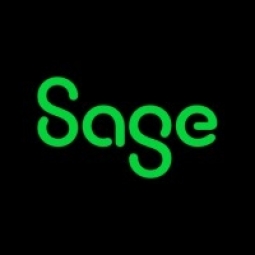下载PDF
Colgin Smokes the Competition With Sage 100 ERP
技术
- 功能应用 - 企业资源规划系统 (ERP)
适用行业
- 食品与饮料
适用功能
- 商业运营
- 销售与市场营销
用例
- 库存管理
- 供应链可见性(SCV)
服务
- 系统集成
挑战
两年前,Kerry Thornhill 以清晰而雄心勃勃的愿景加入 Colgin,担任首席执行官兼营销副总裁。他希望将公司在零售业的形象从小型夫妻店转变为大型、充满活力的制造公司。他梦想通过技术先进性让 Colgin 在竞争中脱颖而出,甚至可能拓展到国际市场。这就要求 Colgin 在所有层面都采用最新的软件,以便为客户提供附加值。同时,Thornhill 希望改善与零售渠道的沟通,并提供大型公司的所有服务,包括每周 7 天、每天 24 小时的客户支持和服务。由于员工人数不足 20 人,使用传统方法几乎不可能实现这一目标。
关于客户
Colgin 公司自 1943 年成立以来,一直为消费者提供独特的产品 Colgin Liquid Smoke。该产品无需户外烹饪,即可提供浓郁的烧烤味道和气味。该公司在全国各地的杂货店提供四种不同口味的产品。除此之外,Colgin 还提供两种外用虫咬缓解药膏,以及用于清洗新鲜水果和蔬菜的产品 Next Generation。该公司总部位于德克萨斯州达拉斯,在一个地方运营。尽管员工不到 20 人,但 Colgin 在零售业中占有重要地位,其产品在 Safeway 和 Albertson's 等大型商店有售。
解决方案
Colgin 的软件顾问建议将 eBusiness Manager 模块添加到该公司用于管理其财务系统的现有 Sage 100 ERP 系统中。该模块将增强现有系统,并充当电子商务的企业对企业网关。通过实施 eBusiness Manager,客户可以上网查看产品价格或下订单。他们可以在白天或晚上的任何时间验证未结订单的状态并进行更改。客户还可以确认预定的发货日期并查看过去几年的销售历史记录,只需单击鼠标即可。这简化了沟通,减少了 Colgin 员工必须花在电话上的时间,从而让员工有时间执行其他任务。
运营影响
相关案例.

Case Study
The Kellogg Company
Kellogg keeps a close eye on its trade spend, analyzing large volumes of data and running complex simulations to predict which promotional activities will be the most effective. Kellogg needed to decrease the trade spend but its traditional relational database on premises could not keep up with the pace of demand.

Case Study
HEINEKEN Uses the Cloud to Reach 10.5 Million Consumers
For 2012 campaign, the Bond promotion, it planned to launch the campaign at the same time everywhere on the planet. That created unprecedented challenges for HEINEKEN—nowhere more so than in its technology operation. The primary digital content for the campaign was a 100-megabyte movie that had to play flawlessly for millions of viewers worldwide. After all, Bond never fails. No one was going to tolerate a technology failure that might bruise his brand.Previously, HEINEKEN had supported digital media at its outsourced datacenter. But that datacenter lacked the computing resources HEINEKEN needed, and building them—especially to support peak traffic that would total millions of simultaneous hits—would have been both time-consuming and expensive. Nor would it have provided the geographic reach that HEINEKEN needed to minimize latency worldwide.

Case Study
Energy Management System at Sugar Industry
The company wanted to use the information from the system to claim under the renewable energy certificate scheme. The benefit to the company under the renewable energy certificates is Rs 75 million a year. To enable the above, an end-to-end solution for load monitoring, consumption monitoring, online data monitoring, automatic meter data acquisition which can be exported to SAP and other applications is required.

Case Study
Coca Cola Swaziland Conco Case Study
Coco Cola Swaziland, South Africa would like to find a solution that would enable the following results: - Reduce energy consumption by 20% in one year. - Formulate a series of strategic initiatives that would enlist the commitment of corporate management and create employee awareness while helping meet departmental targets and investing in tools that assist with energy management. - Formulate a series of tactical initiatives that would optimize energy usage on the shop floor. These would include charging forklifts and running cold rooms only during off-peak periods, running the dust extractors only during working hours and basing lights and air-conditioning on someone’s presence. - Increase visibility into the factory and other processes. - Enable limited, non-intrusive control functions for certain processes.

Case Study
Temperature Monitoring for Restaurant Food Storage
When it came to implementing a solution, Mr. Nesbitt had an idea of what functionality that he wanted. Although not mandated by Health Canada, Mr. Nesbitt wanted to ensure quality control issues met the highest possible standards as part of his commitment to top-of-class food services. This wish list included an easy-to use temperature-monitoring system that could provide a visible display of the temperatures of all of his refrigerators and freezers, including historical information so that he could review the performance of his equipment. It also had to provide alert notification (but email alerts and SMS text message alerts) to alert key staff in the event that a cooling system was exceeding pre-set warning limits.

Case Study
Coca-Cola Refreshments, U.S.
Coca-Cola Refreshments owns and manages Coca-Cola branded refrigerators in retail establishments. Legacy systems were used to locate equipment information by logging onto multiple servers which took up to 8 hours to update information on 30-40 units. The company had no overall visibility into equipment status or maintenance history.





